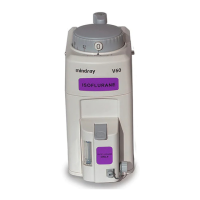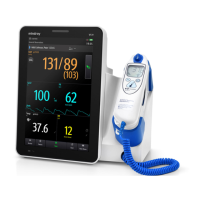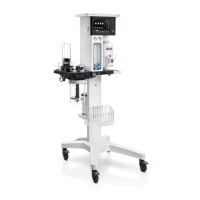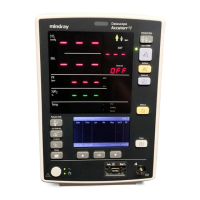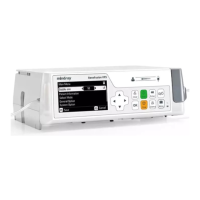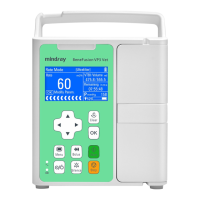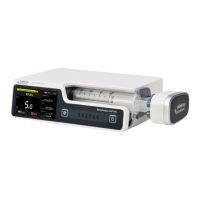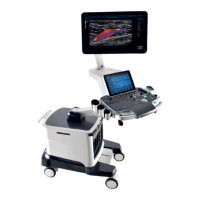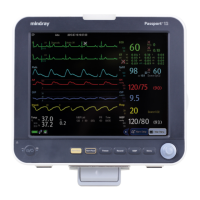Preparation and Lead Placement ECG – Arrhythmia
9 - 12 V Series Operating Instructions
9.5 Preparation and Lead Placement
9.5.1 Skin Preparation
Proper skin preparation is essential in obtaining an accurate ECG reading. Electrode sites should be
clean and dry and should provide a smooth flat surface. Incidental electrical activity and inaccurate
readings may arise from incorrect skin preparation.
The following procedure is recommended for secure electrode patch application:
1. Shave the chest hair from the electrode sites in a circular area with a diameter of
2 to 4 inches.
2. Use a dry gauze pad to remove excess skin oils, skin cells and residue from the electrode sites.
Never rub the skin until it is raw or bleeding.
NOTE: Prepare the electrode site with alcohol only if the skin is extremely
greasy. If alcohol is used as a drying agent, always allow the skin to dry
before placing the electrode patch on the skin.
9.5.2 Electrode Patch Location
NOTE: Store electrode patches at room temperature and open just prior to
use.
NOTE: Avoid more than one type of electrode on a patient because of
variations in electrical resistance.
NOTE: Avoid placing electrode patches directly over bone prominences or
over any high activity movement areas such as shoulders or arms
because muscle motion produces electrical activity. If an electrode
patch is placed over a large muscle such as the pectorals, the monitor
may detect this additional muscle activity and could lead to false
arrhythmia calls.
NOTE: Using a Transcutaneous Electrical Nerve Stimulator (TENS): Since a
TENS unit transmits electrical impulses, avoid placing ECG electrode
patches near the TENS electrodes. ECG electrode patches may need to
be repositioned and the ECG lead viewed may need to be adjusted until
the optimum ECG tracing is obtained.
1. To prevent evaporation of the contact gel medium, peel the backing off of the electrode patch
only when it is ready for use. Visually inspect the contact gel medium for moistness. If the gel
medium is not moist, do not use the electrode patch. Dry electrode patches are not conductive.
NOTE: If using the snap type electrode wires, attach the electrode patch to the
lead wire before placing patch on the patient.
2. Attach the electrode patch to the skin at the prepared site. Smooth the electrode patch down in
a circular motion to ensure proper skin contact. If using soft gel electrodes, never push down
directly over the contact gel medium as this may displace the gel and cause monitoring artifact.
If using hard gel electrodes, it is recommended that during application, the center of the
electrode should be slightly pressed onto the skin to ensure direct contact. Consult the
electrode patch manufacturer’s instructions for specific use.
3. Secure the lead wires to the patient according to hospital practice.

